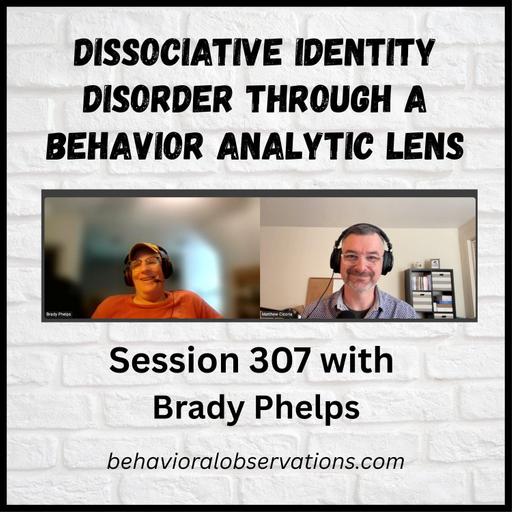
26 Jul 2025 03:21
Dissociative Identity Disorder through a Behavior Analytic Lens: Session 307 with Brady Phelps
In this episode of the Behavioral Observations Podcast, I had the pleasure of speaking with Dr. Brady Phelps, about a topic that has perplexed, and perhaps captivated both mainstream Psychology as well as pop culture: Dissociative Identity Disorder (DID). Our wide-ranging conversation explored the intersection of behavior analysis, mental health, and trauma, with a special focus on how we can understand DID through a scientific, behavioral lens.
Brady’s Career Journey
Brady shared how he discovered behavior analysis almost by accident as an undergrad at Utah State University, under the mentorship of Carl Cheney. After a long academic career, Brady retired in 2021 but remains actively involved in the field. He’s currently developing an Experimental Analysis of Behavior (EAB) toolkit with Dr. Steve Eversole at Behavior Development Solutions, and he's also writing a textbook on learning and behavior designed to be accessible to 20-year-olds.
Understanding Dissociative Identity Disorder Behaviorally
We dove deep into Brady's research on DID, originally published in 2000. His goal was to approach DID from a behavior-analytic perspective, not through traditional psychoanalytic theory. As we discussed, DID has evolved from being characterized by dramatic behavioral shifts to more subtle, self-reported identity disruptions. Brady argued that the identities themselves are better understood as reified constructs—products of distorted tacting that contacts reinforcement—rather than discrete psychological entities.
Trauma, Dissociation, and Behavioral Function
Brady emphasized the importance of not dismissing trauma reports, while also cautioning against assuming trauma automatically leads to DID. We talked about avoidance behaviors, escape contingencies, and how dissociation might function as a response to overwhelming experiences. He brought up examples like Cotard’s Syndrome to show how distorted tacting can manifest in extreme ways.
Rethinking Diagnostic Criteria for DID
We discussed research into amnesiac barriers, such as the Concealed Information Test, which shows people might learn something even if they claim not to remember it. These findings, Brady suggested, should prompt a re-evaluation of how DID is diagnosed, particularly the differences between the Post-Trauma Model and the Social-Cognitive Model—the latter of which emphasizes social reinforcement and therapist influence in shaping alternate identities.
Therapy Techniques and Reinforcement Contingencies
Brady detailed how some therapists use techniques like “roll calls” or even suggesting names to clients in session. While these methods may sound extreme, they reflect how therapist behavior can inadvertently reinforce identity fragmentation. We also discussed Robert Kohlenberg’s 1973 study on behavioral repertoires, which demonstrated how social reinforcement
